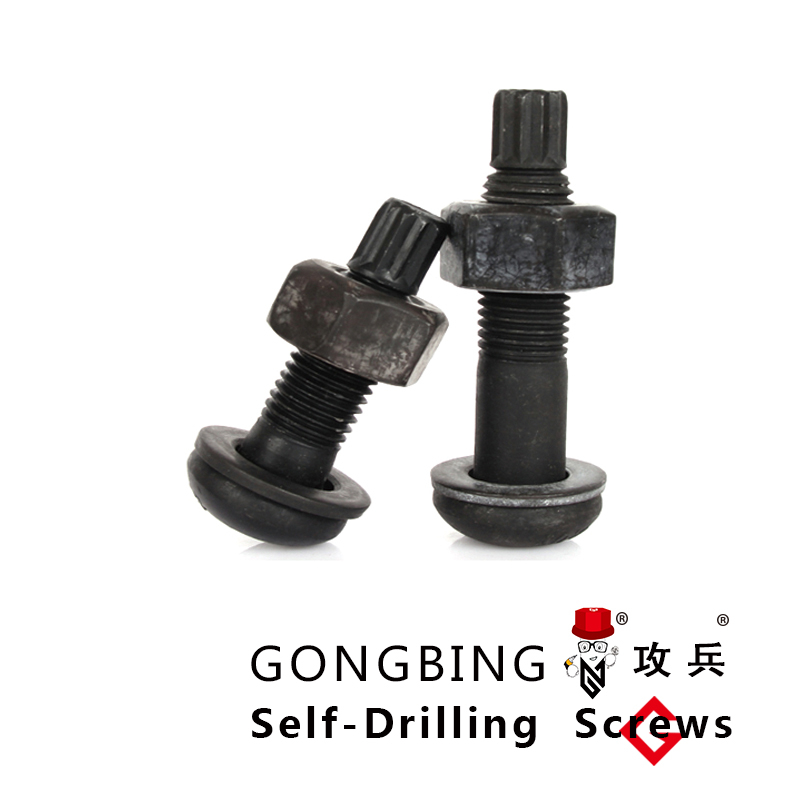self drilling expansion anchors
Understanding Self-Drilling Expansion Anchors A Comprehensive Guide
Self-drilling expansion anchors are essential components widely used in construction and renovation projects. They provide sturdy and reliable fixing points in various materials, including concrete, masonry, and drywall. These anchors have gained popularity due to their ease of installation, stability, and versatility. This article delves into the features, benefits, application methods, and considerations associated with self-drilling expansion anchors.
What Are Self-Drilling Expansion Anchors?
Self-drilling expansion anchors are specialized fasteners pre-equipped with a drill point, allowing them to penetrate materials without the need for pre-drilling a pilot hole. As they are driven into the substrate, the anchor's unique design actively expands, securing itself firmly against the internal walls of the hole. This mechanism ensures a strong grip, making these anchors suitable for supporting various loads.
Key Benefits
1. Ease of Use One of the primary advantages of self-drilling expansion anchors is their straightforward installation process. Users do not need specialized tools, making them accessible for both professionals and DIY enthusiasts. Simply inserting the anchor and utilizing a standard drill can achieve a solid fixation.
2. Time Efficiency The self-drilling feature significantly reduces the time spent on installation. Traditional methods often require measuring, marking, and drilling holes, but these anchors streamline the process, saving valuable time and effort.
3. Versatility Self-drilling expansion anchors can be used in diverse applications, from mounting heavy shelves to installing light fixtures and securing equipment. They work effectively in various substrates including concrete, brick, and drywall, making them incredibly versatile.
4. Load Capacity Designed to handle substantial loads, these anchors ensure a secure and stable mount for various fixtures. Their expansion mechanism provides reinforced support, which enhances the overall strength and reliability of the installation.
5. Minimal Damage Unlike some other fastening methods that can weaken the substrate, self-drilling expansion anchors minimize damage during installation. This characteristic makes them ideal for applications where substrate integrity is crucial.
self drilling expansion anchors

Application Methods
Installing self-drilling expansion anchors requires a few simple steps
1. Select the Right Size Choose the appropriate anchor size based on the load requirements and the material of the substrate.
2. Mark the Location Use a measuring tool to mark where the anchor will be installed. Ensure it is level and correctly positioned.
3. Drill the Anchor Align the self-drilling anchor with the marked spot and use a drill to insert it into the substrate. As the anchor penetrates, pay attention to the resistance, ensuring it expands properly to grip the material.
4. Finalize the Fixture Once the anchor is securely in place, proceed to attach the fixture using the specified screws or bolts, ensuring a tight fit.
Considerations
While self-drilling expansion anchors are highly effective, it is essential to consider factors such as the load-bearing capacity, the material type, and environmental conditions like moisture or temperature fluctuations, which can affect performance.
In conclusion, self-drilling expansion anchors are invaluable tools in construction and home improvement projects. Their ease of installation, time efficiency, versatility, and robustness make them a preferred choice for many applications. By understanding their features and proper application techniques, users can achieve secure and lasting installations with confidence.
-
Weatherproof Plastic Expansion Anchors for OutdoorNouvèlJun.06,2025
-
Sustainability in the Supply Chain: Eco-Friendly TEK Screws ProductionNouvèlJun.06,2025
-
Load-Bearing Capacity of External Insulation FixingsNouvèlJun.06,2025
-
Double Head Bolts: Enhancing Efficiency in Industrial MachineryNouvèlJun.06,2025
-
Corrosion Resistance in Chipboard Screws: Coatings for Wholesale DurabilityNouvèlJun.06,2025
-
Butterfly Toggle Bolts : Enhancing Structural ResilienceNouvèlJun.06,2025
